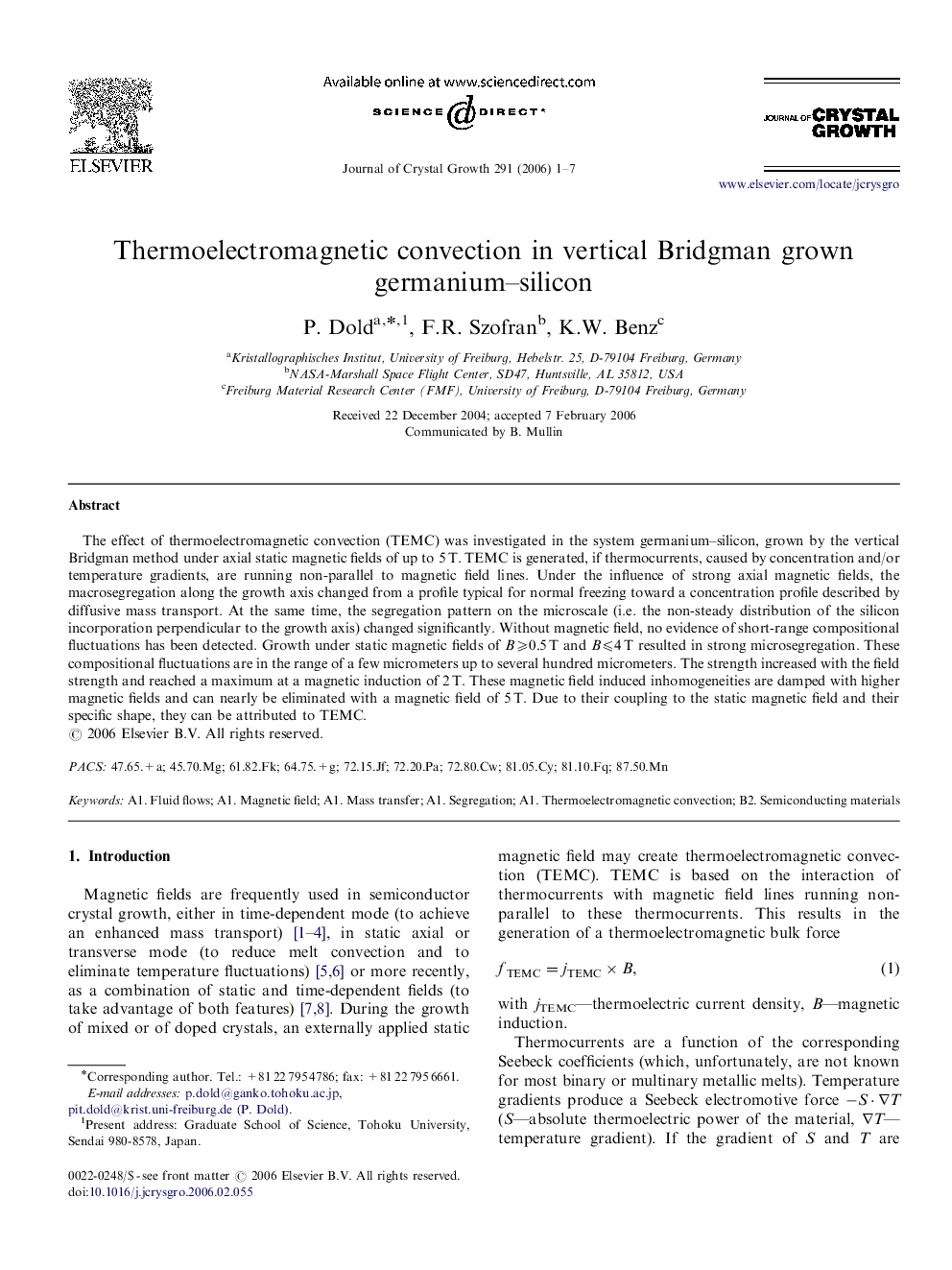| Article ID | Journal | Published Year | Pages | File Type |
|---|---|---|---|---|
| 1796044 | Journal of Crystal Growth | 2006 | 7 Pages |
The effect of thermoelectromagnetic convection (TEMC) was investigated in the system germanium–silicon, grown by the vertical Bridgman method under axial static magnetic fields of up to 5 T. TEMC is generated, if thermocurrents, caused by concentration and/or temperature gradients, are running non-parallel to magnetic field lines. Under the influence of strong axial magnetic fields, the macrosegregation along the growth axis changed from a profile typical for normal freezing toward a concentration profile described by diffusive mass transport. At the same time, the segregation pattern on the microscale (i.e. the non-steady distribution of the silicon incorporation perpendicular to the growth axis) changed significantly. Without magnetic field, no evidence of short-range compositional fluctuations has been detected. Growth under static magnetic fields of B⩾0.5T and B⩽4T resulted in strong microsegregation. These compositional fluctuations are in the range of a few micrometers up to several hundred micrometers. The strength increased with the field strength and reached a maximum at a magnetic induction of 2 T. These magnetic field induced inhomogeneities are damped with higher magnetic fields and can nearly be eliminated with a magnetic field of 5 T. Due to their coupling to the static magnetic field and their specific shape, they can be attributed to TEMC.
